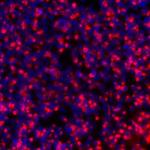
Leslie Joan Baier, Ph.D.
Senior Investigator
Phoenix Epidemiology & Clinical Research Branch
NIDDK
Research Topics
The purpose of our research is to identify the heritable basis for type 2 diabetes and obesity among Indigenous people living in the southwestern region of the United States. We believe that understanding and quantifying specific genetically determined susceptibility factors could lead to prevention by identifying individuals who are most at risk and might benefit from early treatment. The research could also identify novel therapeutic and personalized targets, which may lead to treatment improvements.
Current Research
Escalating rates of obesity and type 2 diabetes are primarily attributed to changes in the environment, coupled with changes in lifestyle. In most developed countries, however, food is now plentiful and lifestyle is generally sedentary. Yet not all people develop obesity, nor do most people with obesity develop type 2 diabetes. Multiple studies have shown that heritable factors underlie a significant portion of the variation in risk for obesity and type 2 diabetes. Environmental variables influence expression of this genetic susceptibility. Type 2 diabetes and obesity adversely and disproportionately impact specific minority populations. Our branch has built and sustained a multi-generational relationship with members of an Indigenous community in the southwestern United States, and the research focus of my section is to identify and characterize susceptibility genes for type 2 diabetes and obesity among these individuals.
We utilize many genomic techniques to identify determinants of obesity and type 2 diabetes in Indigenous people. Whole-genome sequence data has been analyzed on 428 fully consented Indigenous community members who have been clinically and metabolically characterized for predictors of type 2 diabetes and obesity in our clinical research center. Variation detected in these genomes was used to design a custom single nucleotide polymorphism (SNP) array which captures 92% of all common variation in these community members. This array has been used to genotype DNA from 10,000 Indigenous people for 548,000 SNPs, which provided a scaffold for imputation of >20 million SNPs in these individuals to use in genome-wide association studies (GWASs) of obesity, type 2 diabetes, their physiologic predictors as well as their complications. Creation of this custom genotyping specific array has allowed us to capture important genetic information that would have been missed using commercially available arrays. For example, we recently published a study of a variant in the GPR158 gene that associated with lower rates of energy expenditure and increased body mass index (BMI). The BMI risk allele for this variant is far more common in Indigenous people as compared to other ethnic groups (e.g. the risk allele occurs in 60% of the Indigenous community members and <1% of Caucasians) and thus this variant does not occur on commercial arrays. Overall, variants in/near the KCNQ1 gene provide our strongest genome-wide association with type 2 diabetes, and we have shown that these variants affect diabetes risk via an effect on acute insulin secretion. We have also found variation in the nearby TH gene that provides an independent signal for type 2 diabetes. Since GWASs and/or imputation may not accurately capture rare variants, we have also obtained whole exome sequence data on 8,000 fully consented Indigenous people, such that rare variants can also be analyzed either individually or in combination with other rare variants within the same gene. Variants that associate with type 2 diabetes, obesity or related phenotypes are then functionally characterized. In addition to analyzing variants using standard in vitro systems (e.g. luciferase assays) we are characterizing the role of these variants in beta-like cells differentiated from human induced pluripotent stems cells (iPSs). We have shown that these differentiated cells exhibit first and second phase insulin responses to a dynamic glucose infusion that closely mimics the glucose stimulated insulin response in human pancreatic islets. We have used this model system to characterize the effects of key SNPs on islet differentiation and function, and test specific drugs for personalized, targeted treatment.
Applying our Research
Although type 2 diabetes is not always the same disease in different people, currently available drugs are “one size fits all.” Identifying genetic differences that increase risk for this disease will allow development of more specific drugs. Such knowledge will allow physicians to select a drug therapy that is best suited for each patient.
Need for Further Study
As precision medicine becomes a reality in standard medical practice, it is imperative that people across all ethnic groups are given the same opportunities to participate in genomic research. Exclusion of minority populations, who in many cases are disproportionately burdened by metabolic diseases, will only result in an increase in health disparities.
Biography
- Ph.D., University of Michigan, 1990
- B.A., Lawrence University, 1982
Selected Publications
- Nair AK, Traurig M, Sutherland JR, Muller YL, Grellinger ED, Saporito L, Nelson RG, Bogardus C, Baier LJ. Generation of Isogenic hiPSCs with Targeted Edits at Multiple Intronic SNPs to Study the Effects of the Type 2 Diabetes Associated KCNQ1 Locus in American Indians. Cells. 2022;11(9).
- Kim HI, Ye B, Gosalia N, Regeneron Genetics Center, Köroğlu Ç, Hanson RL, Hsueh WC, Knowler WC, Baier LJ, Bogardus C, Shuldiner AR, Van Hout CV. Characterization of Exome Variants and Their Metabolic Impact in 6,716 American Indians from the Southwest US. Am J Hum Genet. 2020;107(2):251-264.
- Day SE, Traurig M, Kumar P, Piaggi P, Koroglu C, Kobes S, Hanson RL, Bogardus C, Baier LJ. Functional variants in cytochrome b5 type A (CYB5A) are enriched in Southwest American Indian individuals and associate with obesity. Obesity (Silver Spring). 2022;30(2):546-552.
- Bandesh K, Traurig M, Chen P, Hsueh WC, Hanson RL, Piaggi P, Baier LJ. Identification and characterization of the long non-coding RNA NFIA-AS2 as a novel locus for body mass index in American Indians. Int J Obes (Lond). 2023;47(6):434-442.
- Köroğlu Ç, Traurig M, Muller YL, Day SE, Piaggi P, Wiedrich K, Vazquez L, Hanson RL, Van Hout CV, Alkelai A, Shuldiner AR, Bogardus C, Baier LJ. Identification and functional validation of rare coding variants in genes linked to monogenic obesity. Obesity (Silver Spring). 2024;32(9):1769-1777.
Related Scientific Focus Areas




Molecular Biology and Biochemistry
View additional Principal Investigators in Molecular Biology and Biochemistry

This page was last updated on Saturday, August 30, 2025